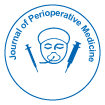
Journal of Perioperative Medicine
Open Access
ISSN: 2684-1290
+44 1478 350008

ISSN: 2684-1290
+44 1478 350008
Commentary - (2024)Volume 7, Issue 6
Perioperative medicine focuses on the comprehensive care of surgical patients, aiming to reduce complications and enhance recovery. One of the most critical aspects of this care is patient assessment and risk management, which help ensure that patients are prepared for surgery and potential risks are minimized. This process requires coordination among different medical professionals to tailor care plans that suit individual needs.
Importance of patient assessment
Thorough patient assessment is an essential step before any surgical procedure. This evaluation includes reviewing the patient’s medical history, conducting physical examinations and using diagnostic tests to understand the patient’s current health status. Such assessments allow healthcare providers to identify potential risk factors that could complicate surgery or recovery.
Medical history review: One of the first steps in assessment is understanding the patient's past and present medical conditions. This includes chronic illnesses such as hypertension, diabetes or heart disease, as these conditions can increase the risk of complications during surgery. Information about previous surgeries and any reactions to anesthesia is also gathered to create a complete profile of the patient's surgical risk.
Physical examination: A thorough physical exam helps confirm findings from the medical history and find out any additional issues. This assessment can identify signs of respiratory or cardiovascular problems that might not have been previously documented. The physical examination often includes checking heart and lung function, assessing weight and Body Mass Index (BMI) and screening for signs of infection.
Diagnostic tests: Based on the patient’s history and physical examination, further diagnostic tests may be ordered. These can include blood tests, Electrocardiograms (EKGs), chest X-rays and other relevant scans. These tests help gauge the patient’s readiness for surgery and highlight any issues that need to be managed before the procedure.
Risk stratification
Once the assessment is complete, the next step is risk stratification. This involves categorizing patients into different levels of surgical risk based on their health status and the complexity of the surgery. Risk stratification helps guide decision-making on the type of anesthesia to use, preoperative interventions required and whether any additional specialists should be involved in the surgical plan.
American Society of Anesthesiologists (ASA) classification: The ASA classification is one tool commonly used to stratify risk. Patients are classified from ASA I (a healthy individual) to ASA VI (a brain-dead patient whose organs are being donated). This grading helps predict potential complications and mortality rates associated with surgery.
Other risk tools: Additional tools such as the Revised Cardiac Risk Index (RCRI) can predict the likelihood of major cardiac events during surgery. This tool takes into account factors like high-risk types of surgery, history of ischemic heart disease and diabetes requiring insulin, among others.
Risk management strategies
Effective risk management in perioperative care aims to minimize the chances of complications and improve overall outcomes. This involves careful planning and the use of targeted interventions before, during and after the surgery.
Preoperative interventions: Based on the assessment, various preoperative strategies can be employed. For instance, optimizing blood pressure, managing blood glucose levels in diabetic patients, and improving lung function through pulmonary exercises are common practices. Stopping certain medications that could interfere with anesthesia or blood clotting is also standard.
Team communication: Risk management involves clear communication among the surgical team, anesthesiologists, nurses and any involved specialists. This ensures that everyone is aware of the patient’s condition and any potential issues that might arise. Regular meetings and the use of checklists can help prevent oversights and improve the coordination of care.
Intraoperative and postoperative care: During surgery, continuous monitoring of vital signs and other indicators is essential to address any problems quickly. Anesthesia plans can be adjusted as needed and surgical techniques modified to minimize blood loss or other complications. Postoperative care focuses on pain management, infection prevention and monitoring for any early signs of complications.
Patient education: Educating patients about what to expect before, during and after surgery helps in risk management by setting realistic expectations and promoting adherence to preoperative and postoperative instructions. Simple steps, such as teaching breathing exercises or explaining the importance of staying hydrated, can support recovery.
Patient assessment and risk management in perioperative medicine are critical for ensuring successful surgical outcomes. Through detailed medical history reviews, physical exams and targeted diagnostic tests, healthcare teams can stratify risks and implement strategies that optimize patient safety. Proper preoperative interventions, continuous monitoring during surgery and thorough postoperative care all contribute to minimizing complications and promoting faster recovery. These efforts not only improve patient satisfaction but also enhance the overall quality of surgical care.
Citation: Carl V (2024). Patient Assessment and Risk Management in Perioperative Medicine. J Perioper Med. 07:254.
Received: 23-Oct-2024, Manuscript No. JPME-24-35273; Editor assigned: 25-Oct-2024, Pre QC No. JPME-24-35273 (PQ); Reviewed: 08-Nov-2024, QC No. JPME-24-35273; Revised: 15-Nov-2024, Manuscript No. JPME-24-35273 (R); Published: 22-Nov-2024 , DOI: 10.35841/2684-1290.24.07.254
Copyright: © 2024 Carl V. This is an open-access article distributed under the terms of the Creative Commons Attribution License, which permits unrestricted use, distribution, and reproduction in any medium, provided the original author and source are credited.